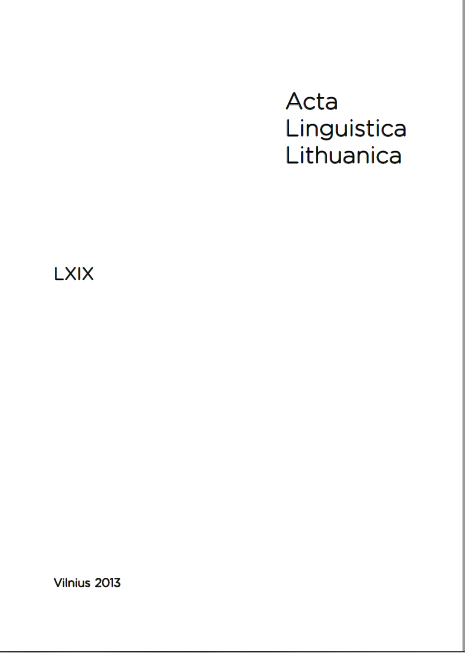Konstantino Sirvydo Punktų sakymų spaudmenys ir rašyba
Typefaces and Orthography in Konstantinas Sirvydas’ Book of Sermons Gospel Points
Author(s): Virginija VasiliauskienėSubject(s): Christian Theology and Religion, Theoretical Linguistics, Morphology, Lexis, Lithuanian Literature, Baltic Languages
Published by: Lietuvių Kalbos Institutas
Keywords: Sirvydas; typefaces; diacritics; orthography; influence of Latin;
Summary/Abstract: This article describes the usage of typefaces as well as the basic principles of orthography in Konstantinas Sirvydas’ book of sermons Gospel Points (SP). Orthography of SP was mostly influenced by Latin and Polish. Most of the different diacritics are seldom used, but in most cases they are used consistently. In certain cases these diacritics are used to mark a stressed syllable or were a means of differentiation in homographs and homoforms. Variations in marking fricative consonants and affricates can be determined both by technical reasons in printing and by reflecting changes in the speech of Vilnius’ residents. Typefaces used for marking abbreviations and omissions followed Latin traditions. Three different typefaces were used during printing for marking both the capital letters <I> and <J> in those parts of the text that were in antique cursive. No special letters were used to differentiate long vowels from short vowels. Variations are evident in marking: (1) [e] and [ai] that follow a soft consonant; (2) voiced consonants before voiceless, and voiceless consonants before voiced; (3) the prefix iš-. Principles of combining adjacent words or writing them separately were influenced by prosodical features as well as by basic standards of other languages and also technical features of the printing process and language competence of editors and typesetters. Usage of capital letters is based on Latin and Polish or is taken from quotable sources.
Journal: Acta Linguistica Lithuanica
- Issue Year: 2013
- Issue No: 69
- Page Range: 30-62
- Page Count: 33
- Language: Lithuanian

